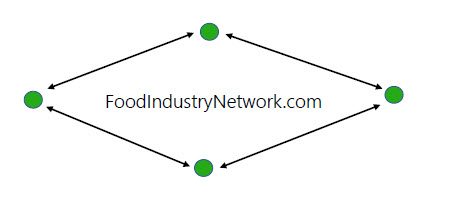Canadian farm cash receipts rise in 2022, but so do inputs

Glacier FarmMedia – Farm revenues have been good in 2023 despite falling crop prices, according to Statistics Canada.
Read Also

Future of food, sustainable business top agenda at Arrell Food Summit
Industry leaders discussed climate solutions and the future of Canadian food at the Arrell Food Summit: Pathway to Change, hosted…
Farm cash receipts for Canadian farmers totalled $72.5 million over the first three quarters of the year, up 7.9 per cent from the same period in 2022.
Why it matters: Farm cash receipts are used to estimate Canada’s gross domestic product.
Crop receipts were up $4.5 billion to $41.4 billion despite the drop in prices because farmers had more product to sell.
They have been marketing the 2022 crop for most of this year, which was vastly improved over the drought-ravaged 2021 crop.
There was a 40 per cent increase in canola sales volumes, a 31 per cent bump in non-durum wheat and a 73 per cent hike in durum marketing due to the return to normal production levels in 2022.
In the meantime, canola prices fell 15.5 per cent, wheat dropped 8.9 per cent and durum values plunged 17.9 per cent during the first three quarters of the year.
J.P. Gervais, chief economist with Farm Credit Canada, said Statistics Canada’s numbers need to be interpreted carefully.
The report only deals with revenues and ignores expenses, so it can paint a misleading picture of the financial health of farmers.
“(It) hides a little bit of the current challenges with margins,” he said.
Growers are starting to feel the pinch of inflation, high interest rates and rising labour costs.
“It is a lot more nuanced, and I would even say fragile than some of the headline numbers would suggest,” said Gervais.
Farmers in Saskatchewan led the way with a 15.9 per cent increase in receipts, generating $16.5 billion in revenue during the first three quarters of the year.
But that is primarily because it was the province that was hardest hit by the 2021 drought, which put pressure on 2022 crop receipts despite sky-high prices that year.
Ontario farmers generated $15.6 billion in receipts, a 3.4 per cent increase over last year. Gervais said the increase was more muted than in the Prairies because growers in the east did not suffer drought in 2021.
Corn and soybean receipts increased by a modest 4.5 and 4.2 per cent compared to wheat and canola hikes of 19.5 and 18.4 per cent.
Alberta led all the provinces with $17.6 billion in receipts, a seven per cent increase over the same period a year ago.
“We had some really good pricing in the cattle industry,” said Gervais.
Nationwide cattle receipts amounted to $10.46 billion for the first three quarters, a whopping 23 per cent increase over the same period a year ago.
Cattle supplies are tight and there is no herd expansion in sight on either side of the Canada/U.S. border.
That should sustain the elevated prices going forward.
However, consumers are feeling the pinch of inflation, which has caused a leveling out of prices, he said.
Manitoba generated $7.5 billion in receipts, an 8.4 per cent increase over last year as strong crop receipts offset slumping revenues in the hog sector, which were down 11 per cent nationally.
The hog industry is struggling to balance supply with declining demand in both domestic and export markets.
“China is not what it used to be,” said Gervais.
The anticipated reduction in U.S. hog supply has not materialized and that is also hurting prices.
“Whatever decline in the U.S. herd that has been happening has been offset by some production gains,” he said.
Gervais is curious what the fourth quarter holds. He expects crop marketing volumes will be down because farmers will be selling the 2023 crop, which was smaller than 2022.
However, he thinks prices could be on the rise because he believes markets have been too aggressive in pushing them down.
The historically high short positions in futures markets will eventually have to cover themselves.
“I think there is a little bit more upside than downside frankly,” he said.
– Sean Pratt is a reporter with The Western Producer.
Source: Farmtario.com

